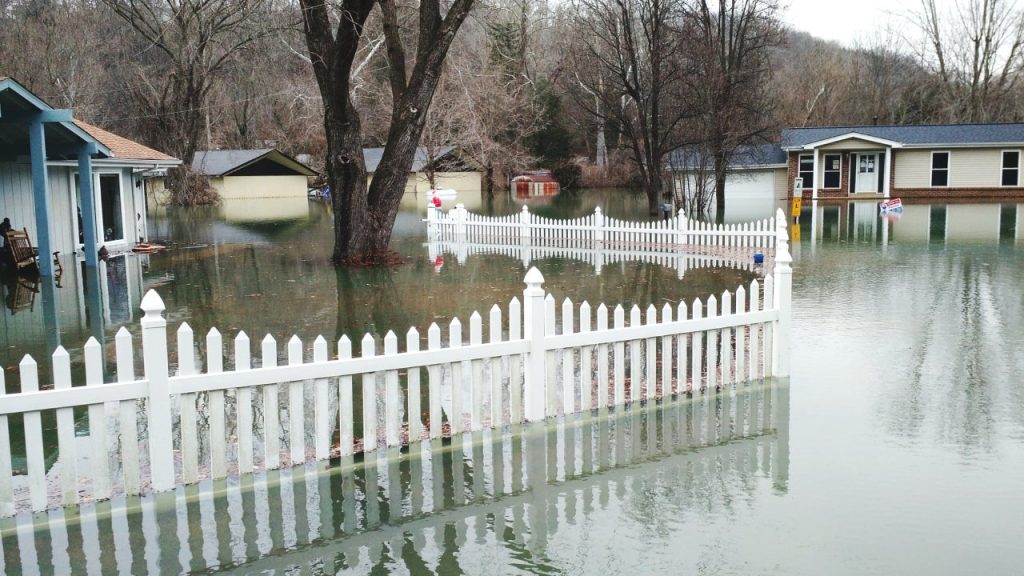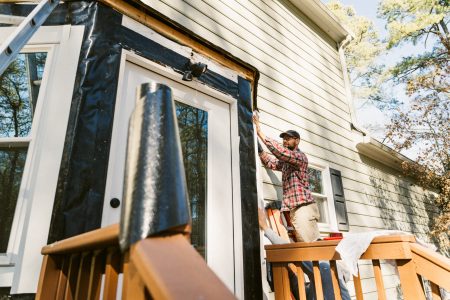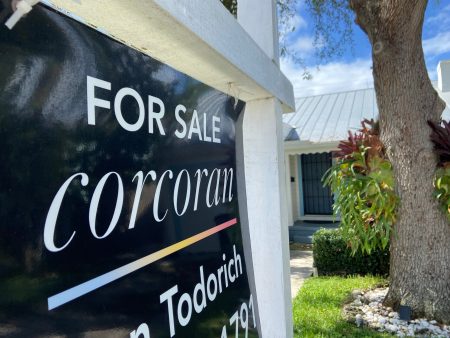Private insurance companies typically review and update risk ratings for home and auto policyholders at least annually. When the Federal Emergency Management Agency (FEMA) implemented its first change to flood insurance risk rating in over half a century, it sparked a controversy.
The new system for setting rates for properties covered by the government-backed National Flood Insurance Program (NFIP), overseen by FEMA, now assesses risk using characteristics of individual properties, such as a home’s replacement cost and elevation. In the past, the NFIP used broader standards such as whether a home was located in a flood zone or not. The new methodology, named Risk Rating 2.0, was fully implemented in 2023.
What is FEMA Risk Rating 2.0?
Risk Rating 2.0 is the new way FEMA sets prices for NFIP flood insurance policies. FEMA had previously used an outdated model for determining flood insurance costs.
Modern science, years of data and the inclusion of third-party software, data sets and models allowed FEMA to create a more accurate system for determining flood risks and the associated costs. Risk Rating 2.0’s approach takes into account numerous variables, such as individual home value and flood risk, that were not previously factored in.
Implementation of Risk Rating 2.0
FEMA rolled out Risk Rating 2.0 in two phases:
- Phase 1: This began October 1, 2021. During this phase, new NFIP policies began using the new pricing methodology. Existing policyholders who were up for renewal could also begin benefiting from Risk Rating 2.0.
- Phase 2: The second phase began April 1, 2022 and applied the new rating system to all existing policies as they came up for renewal. This phase was completed on April 1, 2023, and the plan is now fully rolled out.
What’s new with Risk Rating 2.0?
- Ten states, including Florida, Texas and Louisiana, sued the federal government in 2023, claiming the new rate-setting methodology exceeded FEMA’s statutory authority. According to the lawsuit, higher flood insurance premiums will depress real estate values and cause residents to leave flood-prone states, resulting in a decline in tax revenue.
- In 2024, a federal judge refused the request by the 10 states to block the implementation of the Risk Rating 2.0 program, while also denying the federal government’s request to dismiss the case. It remains pending.
- FEMA is required by law to set rates that keep the NFIP financially solvent. The NFIP currently owes the U.S. Treasury $22.5 billion after borrowing to pay claims for a string of high-cost flooding disasters in the last decade.
- In June 2025, a group of nine U.S. senators from Louisiana, Mississippi, West Virginia and Texas sent a letter to the acting head of FEMA requesting a halt to premium increases. The senators, led by Sen. Bill Cassidy of Louisiana, said that more than three-fourths of NFIP policyholders in their states have seen the cost of flood insurance rise due to Risk Rating 2.0.
Why FEMA updated flood insurance rates
When the NFIP began more than 50 years ago, flood rates were based primarily on broad factors such as whether the home was located in a flood zone or not. Original flood rates also only considered river and coastal flooding.
Risk Rating 2.0 is the first update to risk rating methodology since then, and takes a more comprehensive and individualized look at a property’s flood risk. The goal is to set premiums that more closely reflect the insurance risk to avoid the NFIP needing additional bailouts from taxpayers. Here’s what Risk Rating 2.0 looks at in order to set flood insurance rates:
- Replacement cost value of a building
- Height of lowest floor compared to Base Flood Elevation (BFE)
- Distance from water
- Structure foundation type
- Claims history
- Type of flooding
- Flood frequency
- Pluvial flooding (flooding from rainfall)
What the new rating system means for insuring your property
By law, FEMA is required to set premiums that cover the cost of the NFIP. Currently, the NFIP owes the U.S. Treasury $22.5 billion — not counting the $16 billion of NFIP debt that Congress canceled in 2017 — after a decade of borrowing to cover payouts from flooding disasters. Under the old system, lower-value properties paid similar rates as pricier homes nearby because replacement costs and individualized risk factors weren’t considered when setting rates.
“Replacement cost value has now been added as a rating factor to ensure properties are insured to value, and lower-value properties are no longer subsidizing higher-value properties,” said the National Association of Realtors (NAR), which collaborated with FEMA to develop Risk Rating 2.0.
While many NFIP policyholders saw a rate increase, almost a quarter of policyholders saw their flood insurance rates go down. The ultimate goal is to have policyholders pay a rate that matches their flooding risk and the cost of rebuilding their homes. Below, we’ve rounded up statistics on how NFIP flood insurance premiums have changed for single-family homes since Risk Rating 2.0 rolled out:
- 23 percent of policyholders had a rate decrease, averaging $86 a month
- 66 percent of policyholders had an increase of $10 or less a month
- 7 percent of policyholders had an increase of $10 to $20 a month
- 4 percent of policyholders had an increase of more than $20 a month
Flood insurance rate changes by state
The new Risk Rating 2.0 system was predicted to cause minor rate changes for most policyholders, but some areas did see larger than predicted changes. While Risk Rating 2.0 is designed to be a more fair, equitable rating system, rates will still depend on a home’s individual flood risk. The higher your risk, the more you’re likely to pay.
Even within a state, there is often significant variance between locations. With the new system, more variables go into each rate calculation than before. In some cases, flood prevention steps may be taken to help mitigate the risk of flood damage and potentially reduce rates. Risk Rating 2.0 has also factored in the risk of different types of flood exposures that may cause damage to residences.
Flood insurance rate `glide path’
Flood insurance increases are capped at 18 percent a year until premiums reflect the full risk of the insured property, what FEMA calls a “glide path.” People who sell their homes can assign existing flood policies to buyers, keeping the 18-percent increase cap in effect.
Not everyone is happy with the new system though, as many policyholders in states like Louisiana, Mississippi and Texas have been burdened by rising flood insurance rates. In June 2025, a letter by a group of U.S. senators from 9 states requested a halt to premium increases, citing that three-fourths of NFIP policyholders in their states have seen the cost of flood insurance rise due to Risk Rating 2.0.
“Time is of the essence,” the letter reads. “Each month that Risk Rating 2.0 continues unchecked, more families are forced to abandon their insurance coverage, neighborhoods face economic strain, and entire communities risk collapse after the next disaster.”
Flood insurance for homes outside of flood zones
Flood insurance is required by most mortgage lenders for properties located in federally designated flood zones. NAR estimates that 41,300 home sales a month can’t close without proof of flood insurance.
But flooding — and flood insurance — isn’t just an issue for people living in designated high-risk areas. FEMA says 40 percent of NFIP claims originate from policyholders outside flood zones.
To be covered for flooding, whether in or out of a flood zone, homeowners need to purchase a separate policy; standard home insurance packages typically don’t cover natural floods. People who live outside a flood zone can often obtain flood insurance for a few hundred dollars per year because of the lower risk. To see how much a policy might cost you, you can use FEMA’s quoting tool on its website.
“A lot of people don’t realize that their home insurance doesn’t cover natural floods,” says Joel Scata, a senior attorney with the Natural Resources Defense Council. Without the coverage, homeowners have to pay out of pocket to repair or replace their homes after a natural disaster.
The average NFIP claim is over $66,000, according to FEMA. Climate change is increasing inland flooding as “extreme rain,” which can involve getting a month’s worth of rain in a few hours, becomes more common, Scata says. Furthermore, ocean temperatures hit record highs last year, according to the National Oceanic and Atmospheric Administration (NOAA). Warmer oceans increase evaporation and super-charge rainstorms with more precipitation.
FEMA terms policyholders need to know
If you’re looking to purchase an NFIP policy, or have one already, you should be familiar with the following common terms:
| Term | Definition |
|---|---|
| Risk-based cost of insurance | This is the full actuarial rate calculated by FEMA under the new risk plan based on expected losses. Due to state subsidies, most policyholders pay below this amount. |
| Current cost of insurance | This is the premium that policyholders currently pay. Since the rate can not increase by more than 18 percent a year, premiums will increase until it matches the risk-based cost of insurance. |
| PIF | This stands for policies-in-force, meaning the current amount of active insurance policies held by any particular insurance provider. In this case, the amount of active NFIP policies. |
| Average RCV | The average replacement cost value to rebuild a home after a total loss. This estimate accounts for the cost of parts, labor, location and square footage. |
Why FEMA rate changes matter
FEMA Risk Rating 2.0 will affect each policyholder differently. Some NFIP policyholders will see no change or might even pay less each year. For others, flood insurance rates will increase. If you’re in the market for a home, understanding FEMA’s new rating system can help you make a more informed decision about your new home’s location, homeowners insurance policy and coverage you may need. Some homeowners may choose to pursue private flood insurance if their new rates aren’t sufficiently competitive.
Frequently asked questions
Why we ask for feedback
Your feedback helps us improve our content and services. It takes less than a minute to
complete.
Your responses are anonymous and will only be used for improving our website.
Help us improve our content
Read the full article here












